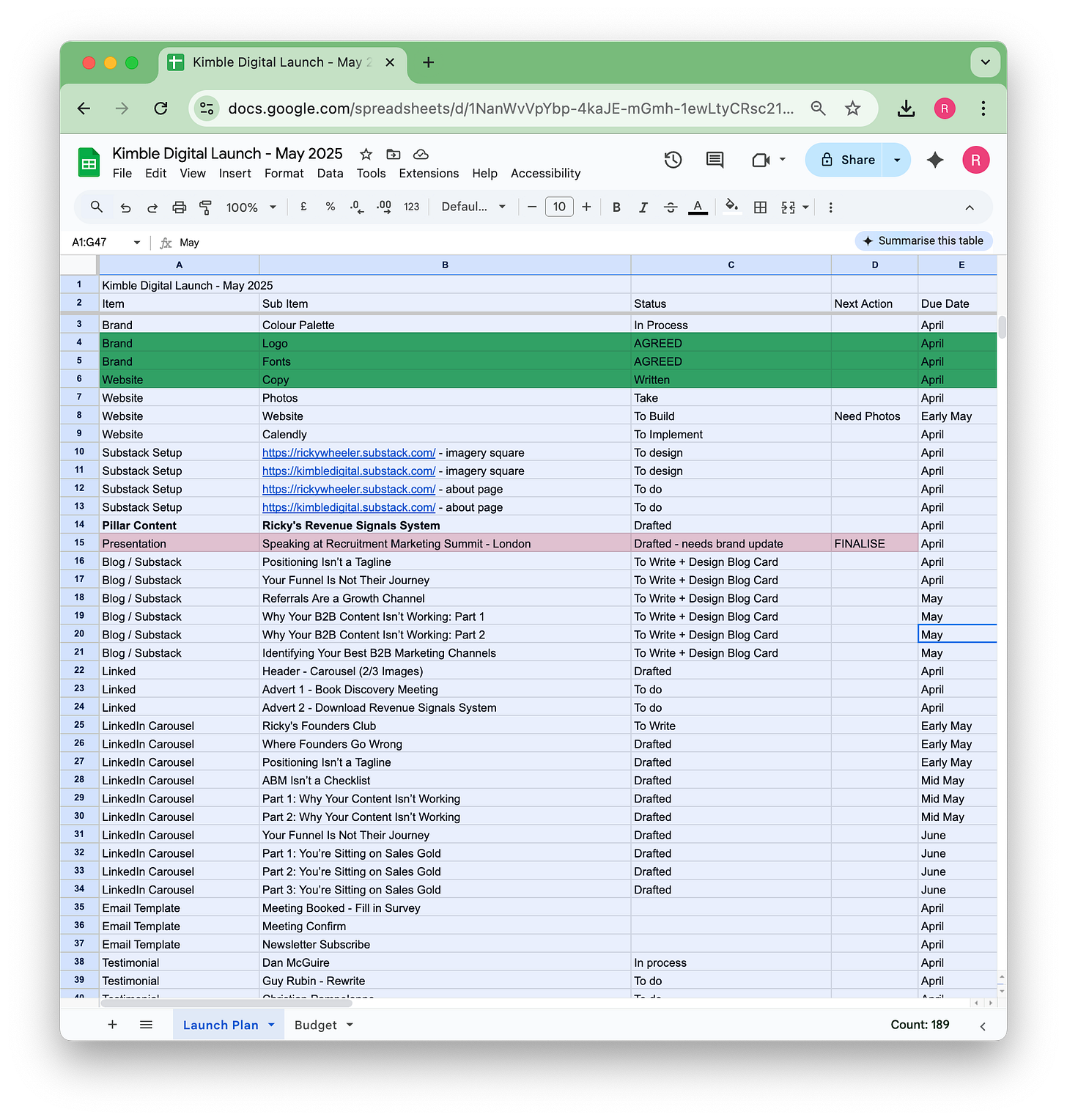Building the Engine: Inside Kimble’s Go-to-Market Strategy
Branding is the easy bit. Building a Go-to-Market System is the real work.
I’m in asset-building mode right now. And I don’t mean fluff — I mean the infrastructure that supports scale. Strategy, sequencing, conversion mechanics, content workflows — everything that turns a brand into a business.
Clear Market. Clear Intent.
Let’s start here: I know exactly who I’m building for.
Founders and directors of B2B businesses turning over £2–10m. Typically pre-exit. Product-strong, sales-driven, marketing-light.
They’re not beginners — they’re experienced operators who know marketing matters but haven’t cracked it yet.
That clarity makes everything else easier.
Branding’s Done (Deliberately)
I’ve already shared how we landed the Kimble font pairing and colour palette. The headline is this:
We chose design assets that underpin trust across every touchpoint — from pitch decks and PDFs to Substack and social.
I’m not dwelling on branding. But I am saying: that these things matter when they’re used well. And they only work when they’re part of a system.
Every Asset Has a Role
There are two types of copy in the works:
Product marketing – Website, LinkedIn profile, service pages, all geared around positioning and proof
Content marketing – Blogs, carousels, Substack posts that drive awareness, interest, and action
But before any of that gets published, you need something far more important:
A compelling offer. A conversion mechanism.
In my case, that’s Ricky’s Revenue Signals System — a free, high-value download that anchors all my content and acts as the gateway into Kimble. It’s how I prove my thinking, deliver value upfront, and qualify the right people.
The System in Motion
Here’s what we’re aiming to tackle in our next 4-week sprint.
Stunning one-page website with integrated meeting booking.
Coherent brand, logos, colour pallet and brand elements.
Pillar Content: Working Title: Rickys Revenue Signals System
Six long-form blogs (I’ll write about how we go about that too).
Three to Five LinkedIn Carousels
All LinkedIn Branding Elements
Automated scheduling assets for Calendly — frictionless for inbound
A qualification flow (soon to be powered by a more intelligent lead capture tool)
Updated testimonials to reinforce credibility
Video and photography to humanise the brand and lift conversion
Everything connects.
The funnel’s not just traffic → lead.
It’s interest → intent → impact.
Now it’s time to get back to doing all the work!
Next Up: Know Your Buyer: Positioning Starts With Understanding Pain
Fixing your funnel starts with fixing your positioning.


